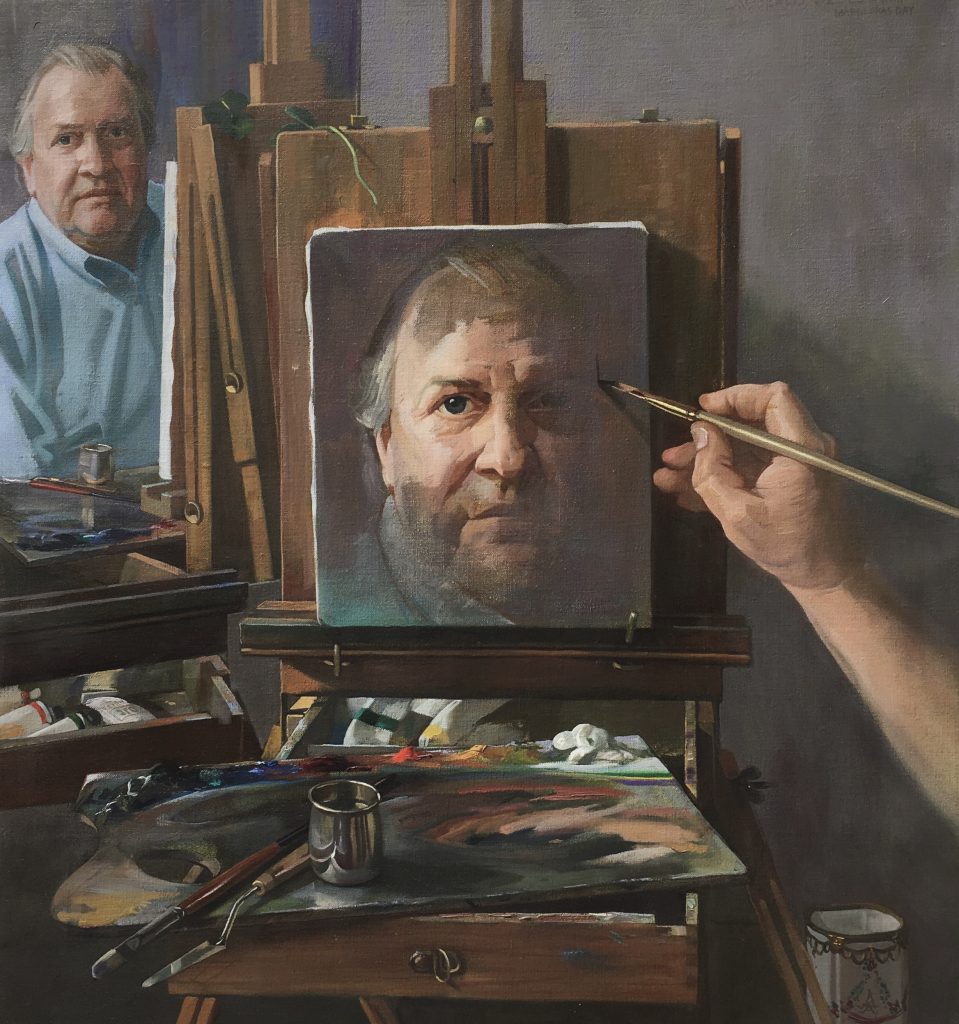
Artists create self portraits for reasons as varied as there are kinds of artists. These paintings provide insight into an artist’s process, the time in which they live(d) as well as personal affect. This seldom seen 2003 painting by Auseklis Ozols offers encoded information regarding how to paint, the relationship between the geometry of composition and the expression of an idea, as well as a process for representing any given chronology of events. It is one in a long series of self portraits he has created, and deserves a careful look.
This particular painting outlines a classic approach to the realist observation based painting techniques which Ozols mastered in Philadelphia. He brought his iteration of it to New Orleans, and has taught, demonstrated, and lectured on for over 40 years. This self portrait also offers commentary on philosophical arguments regarding representation as well as a visual journey through the process of color mixing for flesh tones. The work further demonstrates the progress of constructing a head from life: imprimatura, line drawing, value study, and paint application. Investigating this painting is a lesson in how to paint a realistic portrait in oil as well as an exploration of symbols, philosophy, and the passing of time.
This painting is smaller than many of his other self-portraits at 24 x 24, inches, yet retains his preferred 3/4 life size scale for representation of the figure. The outstretched arm is rendered slightly larger than life size emphasizing distance and perspective between three representations. We also see the third representation of his face reflected in the mirror, furthest in the distance from the viewer.
Closest to the viewer, in the immediate foreground the artist’s palette balances on an open drawer to a well worn landscape easel, leading the eye back toward an in progress head study. It is awe inspiring to see a studio painting on a his landscape easel, as it suggests while he didn’t consider it a first priority for completion in his studio. His large easel, inherited from American Artist Walter Stuemphig, (one of his mentors,) always holds the most important in progress works.
Answers to how Ozols mixes the colors for his flesh tones lie in plain view on his palette. Also on his palette can be seen the carnival colors of purple, green, and gold-a note he made to himself as he painted on Mardi Gras Day that year. The four-leafed clover hanging over the top of his easel exists as another reminder that he also painted through St Patricks day as he finished the work. These totems representing time are arranged within the perspective of the composition. They and others sit within the depth of the space and occupy specific points within the representation of linear and atmospheric perspective.
This painting also demonstrates his mastery over the edge quality of varying forms, with some softly and expertly painted directly into wet paint allowing the edges to melt into the background; while others sharply cut forward, allowing the varying materials each their own identity of space. A piece of French porcelain sits on the lower right hand side, softly yet clearly articulated-favorite vase depicted in many of his flower paintings and gift from one of his dear friends.
Our discussion of this work was a lovely moment amidst stacks of other works awaiting attention. The below photo shows him gazing at his self portrait-almost as a window through time.
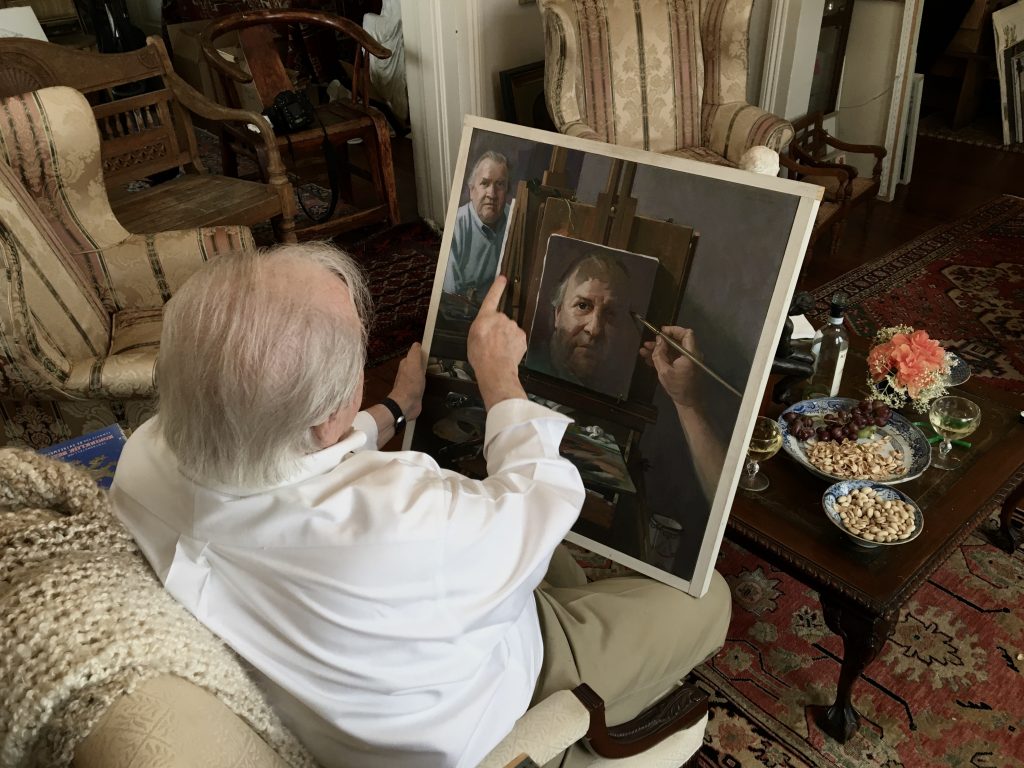
*Note on provenance* This painting was a gift to me upon completing graduate school. It provides encyclopedic examples of techniques and processes in realist painting and AO wanted it to stay in the family. It has never been exhibited “for sale” even the first time it was shown in the Faculty Exhibition of Autumn 2003. The painting is a valuable teaching resource as well as an insightful work of art. When I returned to New Orleans after finishing graduate school in 2003, I was invited to replace Hungarian artist and drawing teacher Katalin Gergo upon her retirement. I assisted in her classes and visited her studio regularly taking meticulous notes on teaching strategies and processes for Drawing I,II, and III. When she eventually retired, I was very grateful to have gone through the experience of being both her student 10 years prior as well as her replacement when she could no longer work. I was grateful to have been given her position as a drawing instructor, and this painting will forever commemorate that transition for me into the world of teaching. Most importantly, the painting provides lessons within the composition on historical visual language and expression. Understanding where and how to look is the key.
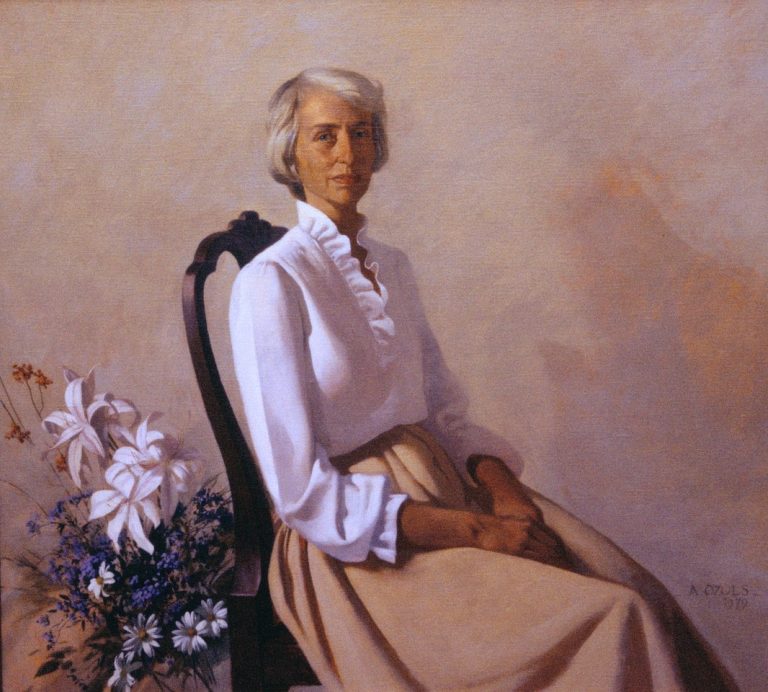
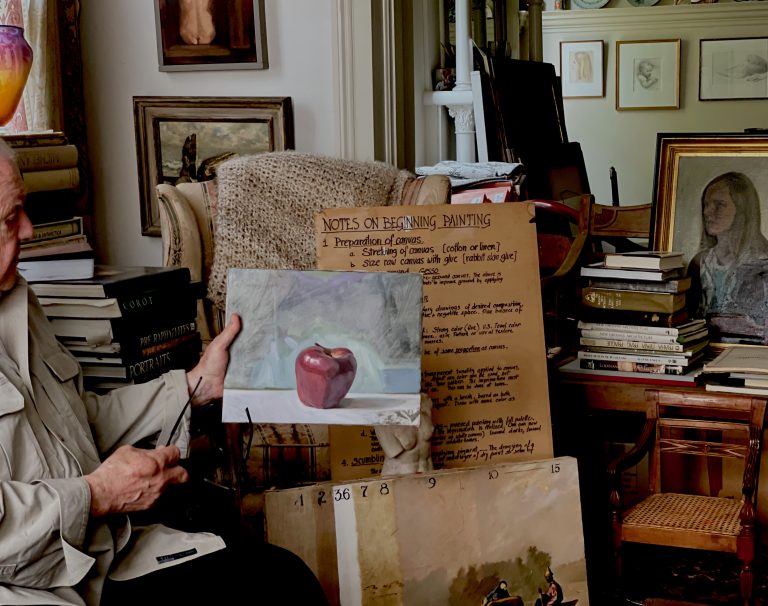
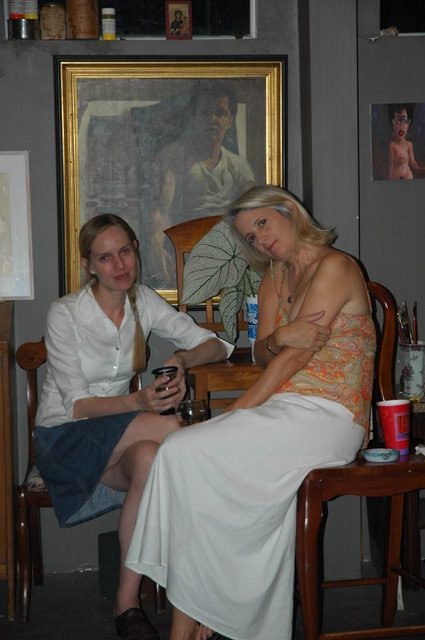
Wonderfully done, Saskia.
We at Abbey Art Works look forward to the possibility providing a safe and profitable place for both you and tour dad to teach- team-teach or same time- separate rooms…? When all is safe from Covid, let’s see what can happen!
Lyn